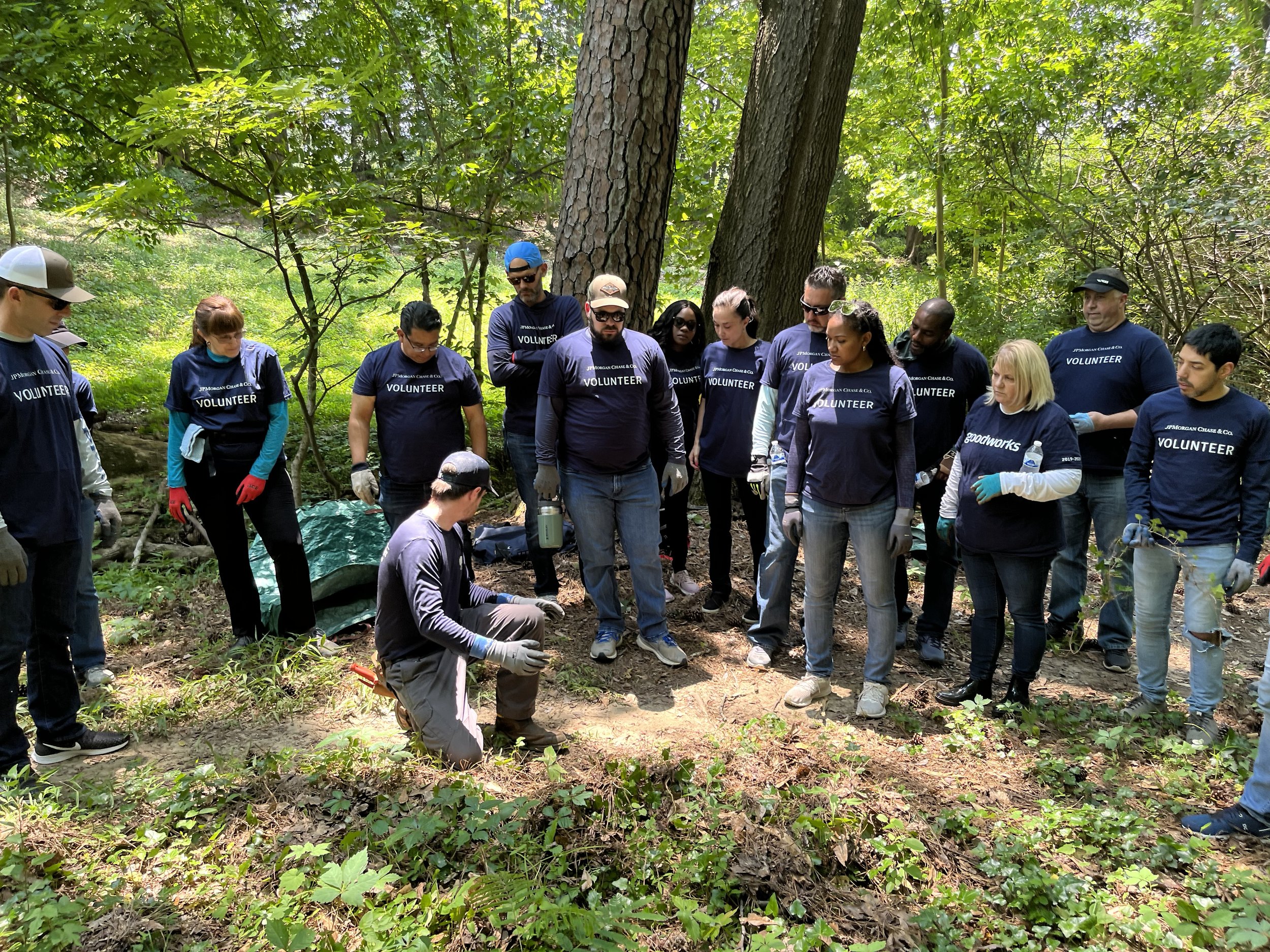
Woods Keeper at
Chastain Park

Chastain Park Spring Update 05.04.25
Things are looking lush in one of our work areas at Chastain Park and we are so happy to see so much diversity! We’re seeing native plant communities thrive — some that were planted, some that were grown from seed, and many that were nurtured from day one when our work started here 3 years ago. Recent plantings include native ferns and blue mist flower provided by the Chastain Park Conservancy plus seeds from Roundstone Native Seed. Invasive plant removal efforts continue moving up creek, uphill, to the south.
Recently we teamed up with CPC to help lead a volunteer day with COX Enterprise. An awesome group of 20 volunteers pulled a whole heap of invasive common ivy off of the ground and off of the trees up near the paved PATH. We’re always grateful to work with volunteers, not only for the helping hands, but to hear about their unique relationships with the outdoors. Creating public awareness around invasive plants and the ecological damage they cause is one of our missions and this is an opportunity for us to share what we’ve learned through our experience so far.
If you ever see us out in the park feel free to say hi and ask questions or just give a quick fist bump for morale, whatever feels right. As Spring rolls on and Summer nears we’ll keep you posted on all this diversity and update you on other work areas.
Overview:
In Spring of 2022 Woods Keeper began work at Chastain Park in an area once nicknamed “kudzu canyon” that’s no stranger to restoration work. Many native plants like trillium, buckeye, sunflower, goldenrods, and asters are naturally returning in some areas while remaining invasive plants like English ivy still dominate in others (before-&-after shown below). Other targeted non-native invasive plants include privet, porcelain berry, elaeagnus, stiltgrass, and multiflora rose.
Working alongside Chastain Park Conservancy who is actively planting native plants throughout the park, Woods Keeper is continuing restoration efforts to remove and suppress these harmful invasive plants while nurturing the native plants and trees that support our local ecosystem. A small offshoot of Nancy Creek runs through the area supporting healthy populations of jewelweed, American jumpseed and much more. The stream flows over the roots of an enormous green ash tree (shown below), a tree so big it made the Atlanta Champion Tree list at #2 for this endangered species.
As the transformation unfolds from an unhealthy and overwhelmed landscape to a biodiverse and abundant woodlands, beauty will naturally follow. Check back for updates, or better yet come see for yourself!
**Does native habitat restoration mean every plant that’s non-native will be removed? No. We believe non-native plants can have a place in landscapes as long as they are not invasive. This issue is not black and white and often requires a nuanced discussion involving the specifics of the site.
Not only does invasive plant removal improve the health and beauty of our natural areas, it also makes trails more inviting.
Brian Barnes of Chastain Park Conservancy and Eli Dickerson of Park Pride measure the large green ash (Fraxinus pennsylvanica).
A host to swallowtail caterpillars and many moths, green ash trees also provide cover and food to many bird and animal species. The green ash has rapidly become endangered in North America due to the Emerald Ash Borer, an invasive beetle whose larvae feed on the inner bark ultimately killing the tree.
Still seemingly healthy for now, this green ash at Chastain Park measures over 11 feet in circumference, 100 feet high, and 60 feet in average crown spread putting it at #2 on Trees Atlanta’s Champion Tree list.






















